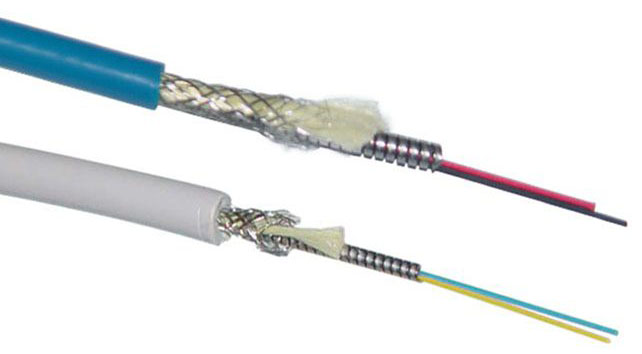Apr. 25, 2022
5G Technology
In the IT world, wireless networks have been called the "fourth utility" for buildings. Along with HVAC, power and water - wireless forms the backbone of enterprise mobility - whether between enterprise sites, on a larger scale, or within enterprise sites. Inconsistency, low network speeds and lack of mobile data availability are driving the enterprise to drive increasingly high-quality connectivity.
5G is the next big leap in telecom and mobile data deployment, currently hampered by a lack of widespread fiber optic cable infrastructure. The availability of fiber optic cable will bring most networks that rely on obsolete copper cables into a new era of supporting IoT and ultra-low latency applications.
Some examples include 5G for machine-to-machine (M2M) and machine-to-everything (M2X) communications, M2X communications for self-driving cars, and millimeter-wave wireless network densification - clustering radio stations in very small areas to provide reliable, high sites to provide reliable, high - speed wireless network access.

Duplex Armored Optical Fiber Cable-Round Type
What needs to be done
Fiber-optic cables must replace copper cables to give 5G a firm foothold.
● Copper cables are typically rated at a maximum speed of about 1 Gbps, which is the minimum speed for 5G networks.
● Fiber can easily support speeds of up to 100 Gbps, about ten times the speed limit for 5G implementation
● Some recent studies have shown that a single fiber bundle can support 10 TB per second or more in some cases (single-mode).
5G speeds are a firm requirement for the implementation of cutting-edge technologies such as self-driving cars, smart buildings and smart cities. As the Internet of Things (IoT) continues to expand, with 4 billion or more connections expected in the cellular space alone by 2024, data throughput requirements could easily exceed the current transmission limit of 1 Gbps. M2M communications will allow buildings to automatically perform tasks such as controlling light, temperature and power consumption, just as M2X communications will allow self-driving cars to predict the environment ahead in advance, further limiting potential accidents before they occur.
Antenna Changes
Radio, like wiring infrastructure, will be very different in 5G networks - instead of individual radio heads covering square miles, 5G radios will be clustered in a single square mile grid for high reliability and high bandwidth connectivity.
● Millimeter waves (24 GHz and above frequency range) will be used for high-quality, short-range data transmission.
● Longer-range wireless communications will take place in bands below 6 GHz, allowing 5G networks to provide coverage in localized areas while still transmitting efficiently over longer distances than a square mile.
● 4G networks currently have coverage of 10 square miles or more, depending on the location of cell towers and the carrier frequencies they use.
Optical splitters for network monitoring
Network monitoring of fiber optic infrastructure can be daunting at first - one wrong move and the glass in the cables can break, rendering them useless. Optical network taps solve this problem in a safe and desirable way - passive network taps require no energy, do not move, and have a very low failure rate when applied correctly.
Optical network taps are critical for network monitoring and maintenance - they do not become a potential point of intrusion or failure, but allow administrators to keep a close eye on the network and track any data loss or latency reduction points. Optical network taps not only provide valuable diagnostic information in terms of latency and network failure, but can also help identify minor line damage that may be caused by ambient temperature changes or tampering.
Signal splitting
Signal splitting allows mobile network operators (MNOs) to increase the coverage and efficiency of their networks and reduce forwarding bandwidth requirements. The forward pass is the connection between the network architecture of the central baseband controller and the remote independent radio headend. By reducing forward pass bandwidth requirements, MNOs can serve more network participants and save on network operating costs. Performance gains aside, effective signal separation (a technique that is not currently optimized) will result in significant cost savings. Some recent developments suggest R&D applications transmitting over 20 Gbps in the frequency range below 1 GHz, which is achieved using multiple-input multiple-output (MIMO) arrays within antennas - experts expect success in the next few years.
Further information indicates that experts believe that 5G may consume less energy than 4G as technology continues to advance.

5G Trend
Cloud-RAN (C-RAN) and 5G
C-RAN describes the decentralized radio access network (RAN), one of the fundamental aspects accepted for 5G. C-RAN will allow mobile network operators to build tightly bound transmission areas by layering access stations and antennas over small areas to improve network performance while also limiting power costs due to inefficient remote transmission. c-RAN, like 5G, requires fiber optic cable infrastructure to achieve the desired level of efficiency. Even with the fastest radios and networks, the bottlenecks provided by older copper infrastructure can get in the way.
Cable Product Regulation (CPR)
CPR is the EU's new strategy for rating cables based on their performance in a variety of situations. Examples include
● Fire
● Flooding
● Smoke and fog
These requirements are intended to give customers and contractors a better understanding of cabling for permanently installed applications. CPR compliance also requires that cables sold after 2017 have these ratings, as well as their interpretation listed on the cable box for clear identification and proper use. 5G is one of the most hyped technologies of the decade, but it won't happen without the underlying infrastructure changes mentioned above. Fiber deployment cannot stop at the street level. In the coming years, fiber optic cables should be provided to departments such as offices and radios to prepare for 5G networks and all that they entail.
Is your business ready for 5G? If not, Flexible Technology can help keep your business in tune with the future.


















